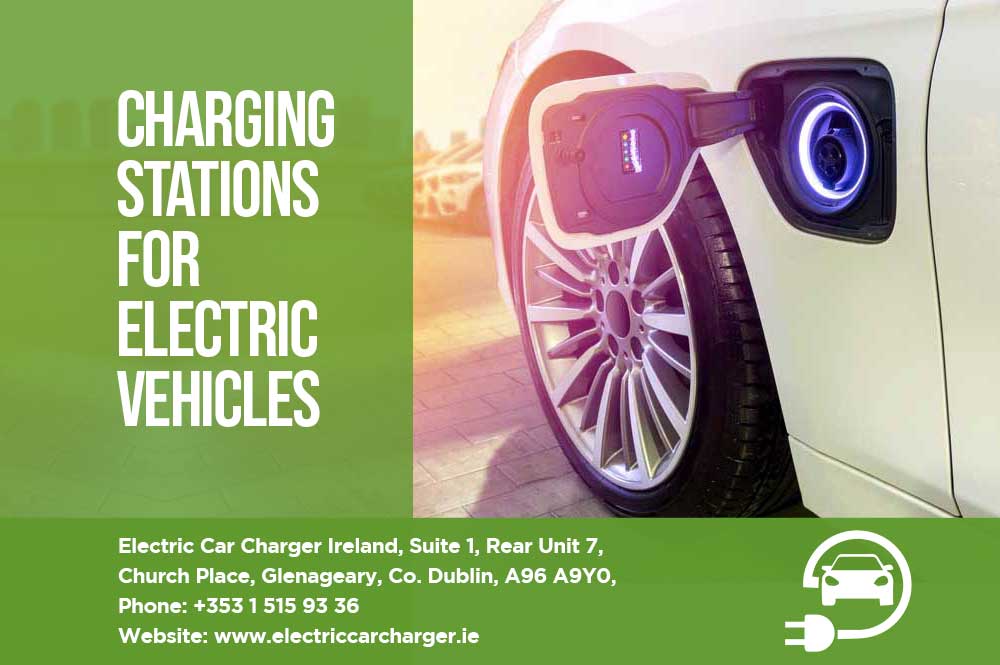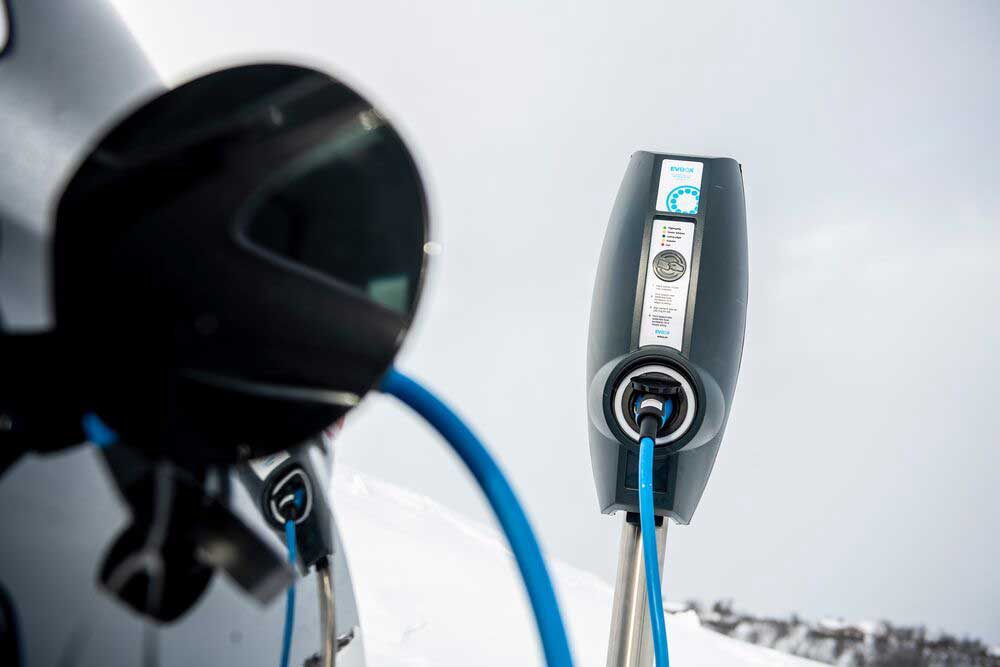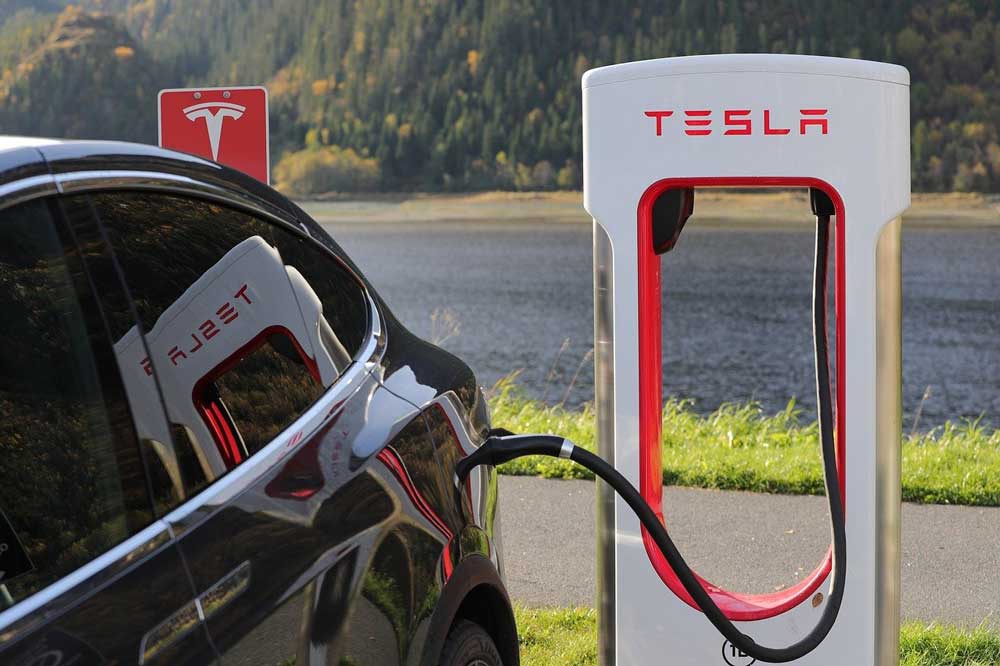Table of Contents
- Electric Vehicle Charging Stations: A Brief Overview
- The Development of Electric Vehicle Charging Stations in Ireland
- Different Types of Electric Vehicle Charging Stations
- How Electric Vehicle Charging Stations Are Transforming the Automotive Landscape
- Electric Vehicle Charging Stations in Ireland – Where Will They Go from Here?
- Charging Station for Electric Vehicles – FAQs
Charging station for electric vehicle – Electric vehicles are becoming a global trend as sustainable transportation options that help reduce greenhouse gas emissions and air pollution. A primary challenge among electric vehicle owners is not enough access to a sufficiently large charging infrastructure. Charging stations play an integral role in enabling the widespread adoption of electric vehicles, and this article examines their rise in Ireland and their effects on the automotive landscape.
Electric Vehicle Charging Stations: A Brief Overview
Electric vehicle charging stations have seen massive leaps in technological progress since the invention of electric vehicles in the early 19th century. The first charging stations were basic low voltage systems that were slow and inefficient; today’s options include Level 1, Level 2, and DC fast charging options.
Level 1 charging is the slowest method of home charging an electric vehicle, using a standard 220V plug. It should only be used in emergency cases and requires caution and consultation with electricity providers [1]. Level 2 charging provides between 3.3kW and 19.2kW of energy through a dedicated station; DC fast charging offers the quickest solution – power delivered directly to your car’s battery in as little as 30 minutes. (More info on – Electric Vehicle Home Charger Grant)
DC fast charging provides the fastest charging speeds, while Level 2 charging stations are more common in public places. Level 2 stations can be found across Ireland and offer significantly faster charging rates than their DC fast charging counterparts. (More info on – EV Chargers Ireland)
The Development of Electric Vehicle Charging Stations in Ireland
Recently, Ireland’s electric vehicle market exploded in recent years with more and more people opting to drive electric vehicles. This boom was accompanied by an increase in the number of charging stations throughout the country; by 2020 there were over 1,200 public stations and 5,600 individual charging points available nationwide. (More info on – EV Public Charging)
The Irish government has played an essential role in encouraging the installation of electric vehicle charging stations, offering various incentives and grants to encourage businesses and individuals to switch to electric cars. As part of its Climate Action Plan 2019, Ireland aims to have 950,000 electric vehicles on Irish roads by 2030; electric vehicle charging stations are essential in meeting this target.
In addition to government initiatives, private companies have also invested in electric vehicle charging infrastructure in Ireland. ESB, Ireland’s state-owned electricity company, has installed over 1,100 public charging points nationwide; other companies such as Ionity and EasyGo have also built stations.
Ireland’s electric vehicle charging station growth has been remarkable, and the country is on track to create a reliable infrastructure that can accommodate the rising number of electric vehicles on its roads. As of March 2023, there are over 2,400 public charging points throughout Ireland with more being installed regularly.
While there remain challenges such as ensuring adequate coverage in rural areas and increasing charging speed, progress made thus far is encouraging.

Different Types of Electric Vehicle Charging Stations
Electric vehicle charging stations come in many varieties to meet different vehicle types and needs. Electric vehicles can be charged in a variety of locations, including public, workplace and home charging stations. When selecting an optimal charging method, it is essential to weigh its advantages and potential drawbacks. Each type of station offers different capabilities that should be taken into account when making a selection.
Public charging stations can be found in public locations like car parks, shopping centres and service stations. Electric vehicle (EV) owners who need to charge their vehicles while running errands or travelling will find these convenient.
Public charging stations can be divided into Level 2 and DC fast chargers; Level 2 stations provide speeds up to 25 miles per hour, making them suitable for longer shopping trips or other errands, while DC fast chargers deliver up to 300 miles in 20-30 minutes, making them ideal for long-distance journeys.
Workplace charging stations are another popular choice for EV owners. They offer a convenient and dependable source of charging for employees who drive electric vehicles, with some employers even providing free charging to make switching even more attractive.
Home charging stations are an integral part of electric vehicle ownership, offering drivers convenient and dependable charging options. Home charging stations can be divided into Level 1 and Level 2 varieties; Level 1s plug into standard household outlets and provide up to 4 miles per hour – making them slow enough for overnight charging while Level 2s require a dedicated 240-volt circuit and provide 25 miles per hour, making them suitable for daily usage.
How Charging Stations for EV Are Transforming the Automotive Landscape
The rise of electric vehicle charging stations has had a profound effect on the automotive industry, revolutionizing how people perceive transportation. Thanks to improved access to charging stations, more people are considering electric vehicles as viable solutions for their daily transportation requirements.
Electric vehicles offer several advantages over traditional gas-powered vehicles, such as reduced emissions, cheaper fuel costs and a smoother, quieter driving experience.
Electric vehicle charging stations make the transition to electric vehicles simpler by offering people a reliable and accessible source for charging.
However, there remain obstacles that must be overcome for the widespread adoption of electric vehicles. One major problem is a lack of charging infrastructure in certain places; without enough stations, drivers may face restrictions when travelling long distances or having to wait an extended amount of time for their cars to be charged.
EV Charging Stations in Ireland – Where Will They Go from Here?
The future of electric vehicle charging stations in Ireland looks bright, with projections for their growth and expansion over the coming years. The Irish government has set ambitious targets for electric vehicle adoption, including 936,000 electric vehicles on Irish roads by 2030. To meet these objectives, various initiatives have been implemented such as grants for home and workplace charging stations as well as the creation of a nationwide public charging network.
Recent advances in electric vehicle charging station technology, such as wireless charging and vehicle-to-grid (V2G) charging, present even greater prospects for the widespread adoption of electric vehicles. Wireless charging eliminates the need for EV charging cables and plugs, making it even more convenient to charge an electric car. Vehicle-to-grid charging allows electric vehicles not only to draw power from the grid but also send it back, making them essential components of Ireland’s renewable energy infrastructure.
The growth of electric vehicle charging stations in Ireland is a positive indication of sustainable transportation. Government initiatives and increasing demand for electric vehicles have contributed significantly to this expansion of infrastructure. With more charging stations available, electric vehicles become more practical for everyday use while fossil fuel consumption is decreasing.
Furthermore, the advent of new technologies like wireless charging and V2G charging, combined with Ireland’s integration of electric vehicle charging stations into its renewable energy infrastructure, portends a bright future for electric vehicles.
However, obstacles still remain such as the need for faster charging stations and the higher cost of electric vehicles compared to gas-powered models. To address these obstacles, governments must continue their support and investment in charging infrastructure while also increasing public awareness and education about its advantages.
Overall, Ireland’s future for electric vehicle charging stations appears bright, and the country could easily become a leader in sustainable transportation. Through concerted efforts between the government, private sector and citizens alike, Ireland can continue to make significant strides toward cutting carbon emissions and creating a cleaner future for all.

Charging Stations for EVs – FAQs
Q: What is an electric vehicle charging station?
A: An EV Charging Station provides electric power for charging plug-in electric vehicles (PHEV).
Q: Can you list all of the types of electric vehicle charging stations available today?
A: Electric vehicle charging stations come in three main varieties – Level 1, Level 2 and DC fast charging. Of these methods, Level 1 charging is the slowest method and should only be used as an emergency backup plan, while level 2 offers faster rates through dedicated stations while DC fast charging offers fast charge times for optimal convenience.
Question: Where can I locate electric vehicle charging stations?
A: Electric vehicle charging stations can be found in several places such as public parks, shopping centres and service stations. Workplaces typically also offer these as employee amenities while home charging is an additional choice available to owners of EVs.
Q: What are the Benefits of Electric Vehicle Charging Stations?
A: Electric vehicle charging stations offer convenient and dependable charging for electric vehicles, making them an attractive and sustainable mode of transport while contributing to lower greenhouse gas emissions and air pollution levels.
Q. How is Ireland supporting the development of electric vehicle charging stations?
A: Ireland offers several incentives and grants to encourage both businesses and individuals to switch to electric cars, with their Climate Action Plan 2019 seeking to reach 950,000 EVs on Irish roads by 2030.
Q. Are There Barriers to Adopting Electric Cars Widespread Adoption of electric vehicles may present difficulties to widespread adoption and usage.
A: One major hindrance of electric vehicle ownership lies with its lack of charging infrastructure in certain places. Without enough charging stations, drivers could face restrictions when travelling long distances or having to wait an extended amount of time before their cars can be fully recharged. Another hurdle lies within their higher cost compared with traditional gasoline models.
Q. Are there any recent advancements in electric vehicle charging station technology?
A: Yes, recent innovations include wireless and vehicle-to-grid (V2G) charging technology. Wireless charging eliminates cables and plugs for convenient car charging; V2G allows electric cars not only to draw power from but also send it back through to Ireland’s renewable energy infrastructure, becoming key components.
Related searches: charging station for electric vehicle, electric vehicle charging stations, level 1 charging, level 2 charging, DC fast charging, EV charging infrastructure, EV charging stations in Ireland, electric vehicle adoption, workplace charging stations, home EV charging station installation company, public charging stations, wireless charging, sustainable transportation, electric vehicle market.
Ever wondered about Myenergi’s Zappi Car Charger ….Check out our latest blog post for details.


